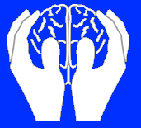Публикуваме тази статия с разрешението на Mind Alive Inc.
The following excerpt is from the Appendices of "The Rediscovery of Audio-Visual Entrainment" by Dave Siever, C.E.T. copyright 1997
The Effect of Repetitive Audio-Visual Stimulation on Skeletomotor and Vasomotor Activity
In a 1988 study, by Dr. Norman Thomas and David Siever, participants were primed with autosuggestions and asked to relax. The participants all had neck and TMJ problems and when asked to relax, they actually tensed up, indicating some type of a performance anxiety. As seen in Figure 1, during the first five minutes, the participants showed an increase in masseter (jaw closing muscle on side of face) muscle tension and a decrease in finger temperature. This phenomenon often occurs in biofeedback training, so many people actually become discouraged with biofeedback when they don't see improvements quickly enough.
When the participants, in this study, were placed on a DAVID 1, an audio-visual entrainment (AVE) device, with stimulation delivered at a rate of 10 Hz, they all relaxed dramatically. After only six minutes, they relaxed even further. With biofeedback, this deeply relaxed state is exceptionally difficult for most people to achieve, even after several sessions. As the graph indicates, the participants' fingers also started to warm. This is a typical sign of whole brain alpha production, similar to that experienced during meditation. At the end of the session, some temporary muscle tension occurred during the removal of the eyeset and headphones, otherwise the relaxing effects of AVE lasted 15 minutes after the stimulation ended.









